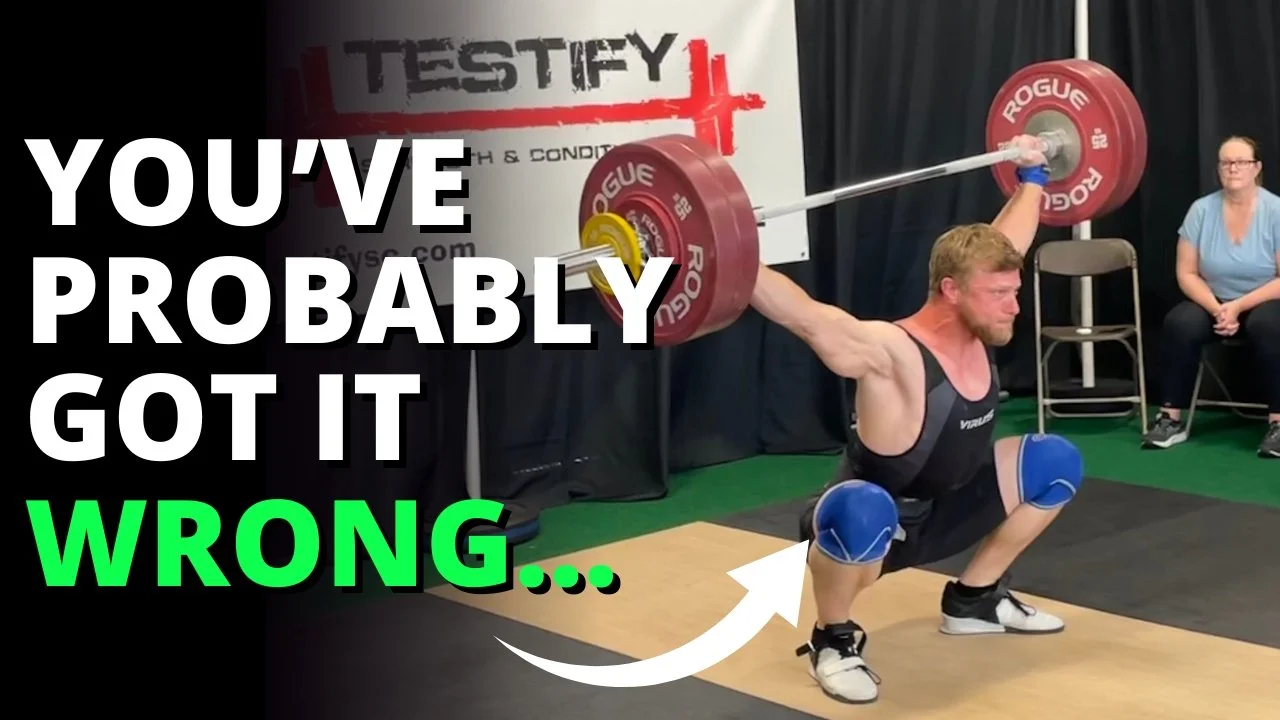No “Power” or “Split”
The words “power” and “split” are absent, so the lift will not be received overhead in the power position (i.e., a partial depth overhead squat), nor will it be received in the split position (i.e., with one foot in front of the torso and one foot behind the torso). By default, this means the lift will be received in a full depth overhead squat (Figure 2).
So . . . What IS a Hang Snatch?
Thus, a hang snatch is a lift wherein the bar starts hanging in the hands and is then accelerated upward, imparting enough momentum to the bar that the bar continues upward, whereupon it is then locked out overhead (AKA “received,” “racked,” or “caught”) in a full depth overhead squat position before it is then stood up.





